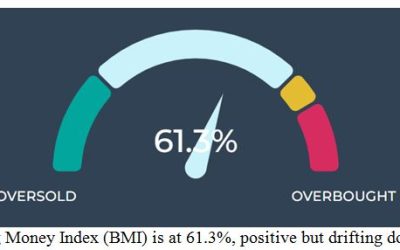by Ivan Martchev
September 3, 2025
It seems to me that the Trump administration – mainly the President himself – views the Federal Reserve like the Supreme Court. The more appointees he puts on the Fed Board of Governors, the more likely they will do what he wants, although with the Supreme Court that has certainly not proven to be a guarantee.
This obsession to find a cause for termination in Fed Governor Lisa Cook’s mortgage documents in order to remove her from the Fed Board, seems to be counter-productive, as it is yet another legal soap opera that may end up in the Supreme Court, which has already stated that the Fed Chairman cannot easily be removed. The crux of the argument is that if what Lisa Cook did or didn’t do is cause, it seems to me that it is not a cause for firing until she has been convicted of mortgage fraud, which would take some time.
Furthermore, there is the issue with the Fed funds rate (which the Fed controls) and what it does to the bond market, which the Fed affects but does not control. I think it is best that Treasury Secretary Scott Bessent request a meeting with the President and explain to him that lowering the Fed funds rate can backfire and cause a spike in Treasury yields. It is very simple, if the Fed lowers the Fed fund rate as low as 2% and inflation, as measured by the CPI or PCE indexes, begins to trend higher (say, above 3%) later this year or in 2026, it is likely that the 10-year Treasury will go above 5%, which would produce exactly the opposite effect of what the President wants to see – lower interest rate to finance a housing boom and investment boom. The odds are perhaps 50:50 that it will backfire if U.S. inflation begins to trend higher.
Graphs are for illustrative and discussion purposes only. Please read important disclosures at the end of this commentary.
A case in point is the Japanese bond market. They offered a negative policy rate of -0.10% from 2016 to 2024 (their equivalent of the Fed funds rate). Now, their short-term policy rate is 0.5%. Japanese JGBs (equivalent to Treasurys) have 30-year and 40-year yields of 3.18% and 3.42% and rising. Japan had many years of problems with deflation, but now it has problems with inflation at 3.2% and policy rate of 0.5%.
The President has too many irons in the fire to worry about Federal Reserve personnel and policy. He gets a new Fed chairman next May, and a Lisa Cook firing would only add fuel to the uncertainty fire and worry investors, just as the President seems to be winning a trade war, so far. If he succeeds in everything he has started – except for meddling with the Federal Reserve – he will turn out to be one of the greatest presidents in history, so … this Federal Reserve meddling is completely unnecessary at this juncture.
I think investors still perceive Fed independence to be intact, which is why there has been a muted market reaction so far. If the Lisa Cook removal is successful and there are other such attempts to remove more Fed governors, or the lame-duck Fed chairman, the sell-off in both stocks and bonds could be substantial.
The S&P 500 is Hinting at a Correction
Recent violent rotations out of technology stocks into the value part of the market continue can mean only one thing – a correction. It is not possible to rotate out of the top eight stocks in the S&P 500, which are roughly 36% of the value of the index, and have the S&P 500 go up. On Friday the NASDAQ 100 Index (of which those eight stocks are about 70% of the value of that index) was down 1.22% while the S&P 500 was down 0.64%, which is what a rotation looks like. So, if the rotation continues, which I believe will be the case, the correction in the NASDAQ 100 Index will be sharper, but it will drag down the S&P 500, too.
As I noted last week, the entire Russell 2000 Index is worth less than the #1 company in the S&P 500. In other words, relative strength in the small-cap sector cannot pull the stock market higher.
Graphs are for illustrative and discussion purposes only. Please read important disclosures at the end of this commentary.
If you look closely, since the rally started in earnest in late April, the S&P 500 has only seen two closes below its 20-day moving average, which came at the end of a shallow correction (green line, above).
If we register a couple of consecutive closes below that 20-day average and the index heads lower from there, it would be a pretty good signal that the correction has started.
Where could the correction end? My base case scenario is the area of the 200-day moving average (red line) give or take 2%, which is what a normal correction looks like. That is without the trade war going into high gear or any other overriding events. I think a possible firing of Fed Chair Jerome Powell is worth a 3% to 5% sell-off in one day in the stock market alone. The firing of more Fed governors for a “cause” that looks nothing more than an attempt to get interest rates lower, faster, could also fuel sell-offs.
We can still make fresh all-time highs if the Fed cuts by 50-basis points and indicates more cuts this year, but ultimately because of these intensifying rotations out of technology some type of correction is coming, in my opinion. My target of the S&P 500 remains a year-end reading near 7,000 as the supply side policies of the Trump administration begin to stimulate the economy.
The post 9-3-25: The President’s Misguided Assault on the Federal Reserve appeared first on Navellier.







